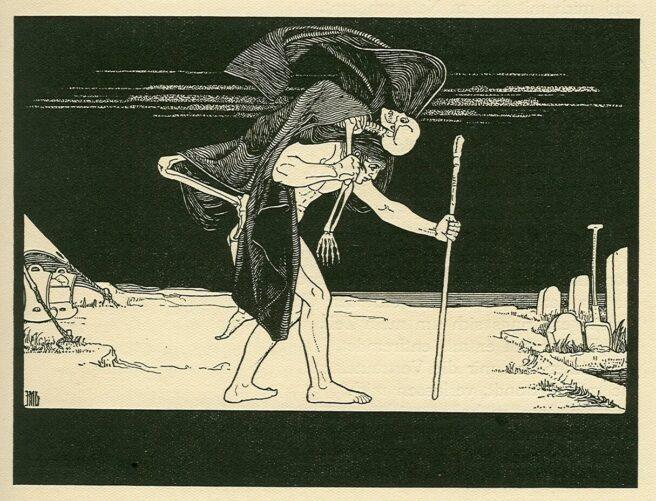
Jewish folklore is often thought of as harmless folktales to educate children, but the reality is that the tales of our people often contain some horrifying elements. These may have been meant to scare people into behaving or were holdovers from earlier traditions, but the tales themselves have quite a bit of a scare factor to them. Horror video games often take from folklore traditions and I would love to see a horror game that takes influence from Jewish folk tradition.
It is important to realize of course, that Jewish folk traditions vary based on what country the community resided in during the diaspora, and while the largest amounts of Jewish folklore come from the communities that resided in Poland and Morocco, most all Jewish communities have folk traditions that would make for great video game tales. From stories of things that go bump in the night, to people who committed horrific actions that linger, Jewish folk tradition is something that storytellers should take from in order to let people learn about the tales of the Jewish communities and learn from them.
Creatures in Jewish folklore are much more than just the Golem, a figure that can be argued to have influenced the story of Frankenstein in its own right. There are many others as well, some that are well known, such as the Dybbuk and some not as well-known, such as Estries. All of these can make for the basis of a horror game that is made well. I would also add that these horror games do not need to be full AAA big-budget games but can also be done extremely well as indie games.
For those unaware of what Estries are, they are very similar to vampires but are always female. Estries drink the blood of the living and make themselves known at night because they were made at sunset. Estries can turn into birds and cats, and can fly if their hair is unbound. Estries are not weakened by religious symbols and a tactic of theirs would be to trick a Rabbi into giving them a blessing, an act that would lead to disaster. A horror game could have a Rabbi and others in a synagogue with Estries among them and have to try and survive the night and avoid the Estries traps. No one would know who to trust, and the game could actually be similar to the popular title Among Us, but playing up the survival horror aspect. It could also be a single-player game, with a Rabbi and their congregation being stalked by Estries and the Rabbi must do what they can to help everyone survive.
The Dybbuk is, as mentioned, a more well-known concept. A Dybbuk is a malevolent spirit that possesses someone and carries out acts against the host’s will. A horror game dealing with the various legends of the Dybbuk would be an interesting idea and could explore more esoteric concepts of Judaism while exploring psychological horror. Along the way, the protagonist could also come across the counterpart of the Dybukk, the Ibbur. The Ibbur is nowhere near as widely known as the Dybbuk and is the opposite entity in many ways. The Dybbuk is malevolent and typically the soul of a wicked person, the Ibbur is benevolent and usually the soul of a righteous person. The Ibbur will often guide the host along to help them make a correct decision and will never force them to do something against their will. The Dybbuk is an entity that seeks to control you, while the Ibbur seeks to help you achieve your potential. A game that sees a Dybbuk as a villain or obstacle could have the protagonist helped by an Ibbur along the way, giving more means to explore Jewish mysticism and folk tradition. It would also help grow the tension and create a sense of just how terrifying a Dybbuk can be.
Then there are tales of locations rather than creatures, that come from tradition. The legend of the unfinished corner of creation, for example, said to dwell in the North, is said to be a place of evil spirits and frigid winds, which is a perfect setting considering how many great horror stories use the Arctic and Antarctic settings. Perhaps a game where someone either seeks it out or comes across it after a plane accident and must survive and try to find their way back. They would have to fend off entities like Mazikeen and other demons and try to maintain their sanity long enough to either find a way back or perhaps find a way to send word for help, if possible.
These are just some ideas obviously, and Jewish folklore is home to many more stories, such as tales of demons, various fantastic creatures and unique locations abounding. These would not appeal to Jews only, but also to many non-Jews. There are plenty of people who would find this fascinating, in part due to the cultural stories that would be a great way to show a deeper look.
This article first ran on TribeHerald and is used again here with permission.

